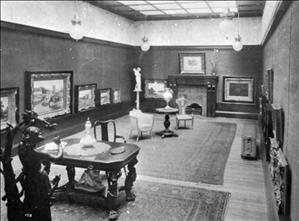On January 21, 1968, Marymoor Museum, a museum of eastside history, opens at Marymoor Park in Redmond with a lavish openhouse that draws nearly 1,000 visitors. The museum operates out of the Clise mansion until 2002, when a King County budget shortfall brings eviction upon the museum.
A Home for History
Marymoor Park, purchased in 1962 for $1.1 million, was the first King County Park. The park is best known from its days under the ownership of James Clise (1855-1939), who tuned the property into a working farm of world renown. Clise sold the property in 1928, after which it passed through various hands until being bought by King County.
Around the time the park was purchased, the Five Corners Community Club in Kirkland was working to create a museum of Eastside history. Along with the Federated Eastside Clubs, they approached county commissioners with the thought of turning the Clise mansion into a museum.
The county agreed to lease half of the building, and the Northeast King County Historical Association was created to run the museum. In the months prior to opening, members of the historical association scoured the eastside looking for donations of historical artifacts.
Guns and Butter
Nearly 1,000 visitors attended the museum's openhouse on January 14, 1968. There, they saw a gun collection on loan from Larry Bixby, an old fashioned kitchen made up of items loaned by Ruth Stephens, and collections of old records and newspapers, including a 1910 edition of the Redmond Press.
Dr. and Mrs. Max Nichols loaned their square Steinway piano for the music room, which was decorated in Victorian drapes, lace curtains, and an oriental rug. The only furnishings in the museum from the Clise era were a large living room table and a leather upholstered sofa.
During the open house, members of the historical association wore vintage clothing from the turn of the century. The Cascade Chapter of the Daughters of the American Revolution sponsored the clothing donation.
Three Decades of Service
Over the years Marymoor Museum operated on a small budget, yet its collections grew. Donations to the museum included farm implements, photographs, and furniture. One popular exhibit, showcased almost every year, was Marymoor's large collection of quilts.
By the twenty-first century, the museum had outgrown the building. In 2001 it merged with the Bellevue Historical Society to become the Eastside Heritage Center. Fundraising plans began for a new museum to house the collections of both organizations, as well as to showcase the treasures of other local historical societies.
Unfortunately, a $52 million shortfall in the King County budget led to the eviction of Marymoor Museum from the mansion, in favor of more commercial ventures. As of this writing (2002), most of Marymoor's collections are in storage.

